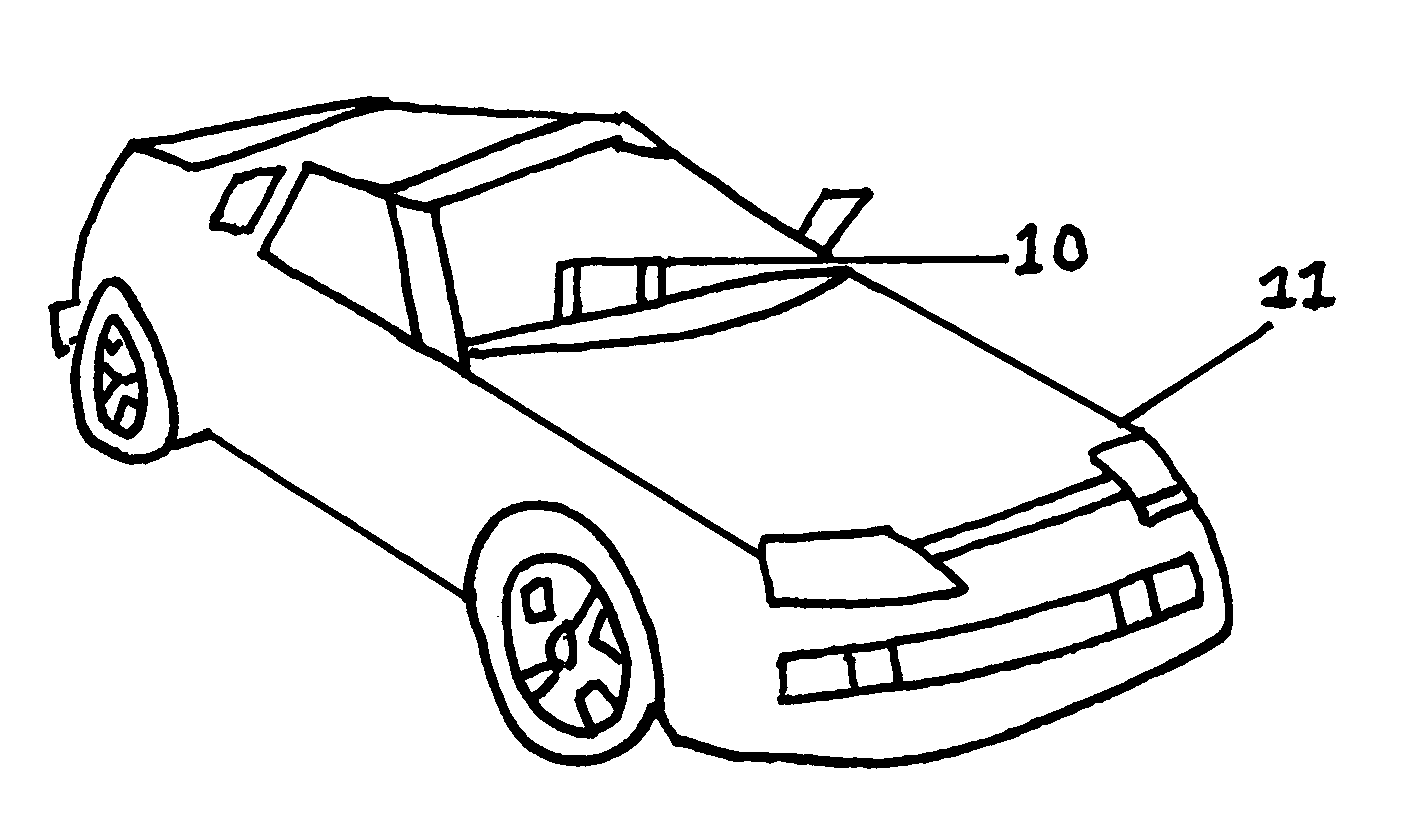Method for automated VIN acquisition and close proximity VIN verification
a technology for automated vin acquisition and verification, applied in the field of automated vin acquisition and close proximity vin verification, can solve the problems of limiting the use of repeaters, call centers or dispatch services, methods, apparatuses and systems described, and not providing a means for automatic vin acquisition (vin) numbers, etc., to achieve the effect of eliminating repeaters, call center and dispatch services, saving lives, and being convenient to us
- Summary
- Abstract
- Description
- Claims
- Application Information
AI Technical Summary
Benefits of technology
Problems solved by technology
Method used
Image
Examples
Embodiment Construction
[0036]The detailed description of the present invention describes the illustration of FIG. 1 as it is used in the acquisition and verification of vehicle identification number(s) (VIN's) and is used to identify stolen, stranded and crashed vehicles 13 within close proximity. FIG. 1 illustrates the use of a mobile WiFi modem / router 12 which is preprogrammed by changing the Service Set Identifier SSID to a 17 digit (VIN) vehicle 13 identification number. Vehicle 13 is equipped with a mobile WiFi modem / router 12 by using the vehicles 13 existing conventional twelve volt electrical wiring system and is also equipped with a self contained battery backup, should the vehicles main electrical power be severed. The Mobile WiFi modem / router 12 is hidden within vehicle 13.
[0037]Mobile WiFi modem / router 12 is capable of modulating the 17 digit (VIN) into a radio signal and then broadcasting the signal until it is received by the Modem Laptop 10 through the use of Port Forwarding (PF), Real-time...
PUM
 Login to View More
Login to View More Abstract
Description
Claims
Application Information
 Login to View More
Login to View More - R&D
- Intellectual Property
- Life Sciences
- Materials
- Tech Scout
- Unparalleled Data Quality
- Higher Quality Content
- 60% Fewer Hallucinations
Browse by: Latest US Patents, China's latest patents, Technical Efficacy Thesaurus, Application Domain, Technology Topic, Popular Technical Reports.
© 2025 PatSnap. All rights reserved.Legal|Privacy policy|Modern Slavery Act Transparency Statement|Sitemap|About US| Contact US: help@patsnap.com


